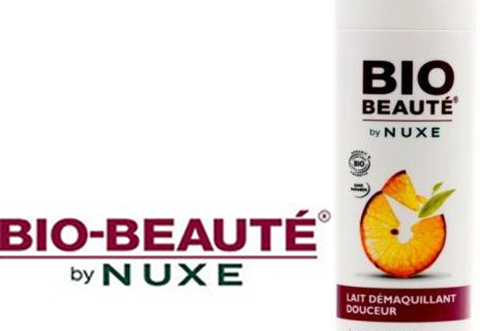Protectability from a trademark through use – BIO-BEAUTÉ
The case: Cancellation attacks on descriptive trademarks are not uncommon. What exactly must one do to avoid such an attack and achieve protectability from a trademark through use? A dispute about two almost identical cosmetics trademarks provides some insight.
Since 2008, the Luxembourg Société de Recherche Cosmétique (SRC) has been developing various natural skincare products. It created a brand for this purpose:
BIO-BEAUTÉ
The products were distributed by the well-known Parisian LABORATOIRE NUXE, and were immediately successful, winning several awards. They are particularly well known in France.

SRC registered BIO-BEAUTÉ first as national trademarks and in 2015 as a European trademark.
Afterwards, it was discovered that in 2017 the American company ‘Beauty Biosciences’ had registered an almost identical brand
BEAUTYBIO
for cosmetic products. SRC subsequently applied for its cancellation on the basis that BEAUTYBIO merely described the effect of the cosmetics, namely that they improved one’s appearance through organic products. They argued, the trademark was an unprotectable advertising medium.
But the above also could apply in relation to SRC’s earlier mark BIO-BEAUTÉ in the French-speaking area of the EU. BIO is understood as an indication of natural substances and represents production under natural and environmentally compatible conditions. And BEAUTÉ is the French word for ‘beauty’, essentially the same as the English word BEAUTY.
Beauty Biosciences therefore also adopted SRC’s arguments and filed a reverse cancellation application on the basis that if one party’s trademark should fail, so should the other.
SRC would only be able to avoid the cancellation of its mark by proving that BIO-BEAUTÉ had already acquired distinctive character as a trademark when registration as an EU trademark was applied for in 2014.
The hurdles for obtaining protectability as a trademark through use are set very high and such proof is only rarely successful. Certain evidence has greater probative value than other kinds.
Fortunately, SRC was able to provide the relevant direct evidence in relation to acquisition of distinctiveness through use. This included the investments made in advertising, specifically in terms of advertising media, the circulation levels of such advertisements, the distribution period and areas, and in the case of internet advertising, the domain, access numbers and placement periods of each campaign. Of direct relevance were also the value and volume of BIO-BEAUTÉ products sold between 2009 and 2017 in France, presented in classification tables of selected organic cosmetic brands. The documents submitted on the use of the trademark in the various EU states also had direct evidentiary value.
This evidence, together with the secondary evidence submitted, was sufficient to show that BIO-BEAUTÉ had acquired distinctive character through use. This secondary evidence, with a correspondingly lesser probative value, showed various applications of the mark since 2008, in order to prove the duration of use, included press articles and all documents that could be considered advertising, that is, the images of the goods concerned in connection with the disputed mark, reviews on products in social media, sweepstakes on Facebook and sales figures.
In particular, the advertising material and the sales figures could only be considered secondary evidence, as they did not prove that the public that was targeted by the goods or services in question perceived the sign as an indication of commercial origin. At most, therefore, such means can only support the direct evidence of distinctiveness acquired through use.
The fact that SRC had used the mark BIO-BEAUTÉ only in the combination ‘Bio-Beauté ® by Nuxe’, and not in isolation, did not prevent it from acquiring distinctive character. BIO-BEAUTÉ was in fact always highlighted with the registration symbol ® and in much larger type than ‘by NUXE’. It was thus clear to the consumer that BIO-BEAUTÉ was the trademark and that the products were distributed by the company NUXE.
As direct evidence, SRC could also have relied on surveys or market research and statements from trade and professional associations as well as evidence of specific use as a trademark.
BIO-BEAUTÉ was not cancelled for cosmetic products because it had acquired protectability as a trademark through use when it was filed in the European Union,
General Court of the European Union, 22 March 2023, T- 750/21.
Learnings: If you want to register a descriptive designation as a trademark, you should ensure that the designation has acquired protectability as a trademark through use prior to the application. You must be able to prove the protectability of such a designation. To do this, particular importance is attached to direct evidence of distinctiveness. In particular, sales figures and advertising material only have little probative value.
Reference: Please also read the article: Trade mark for simple figurative signs – adidas